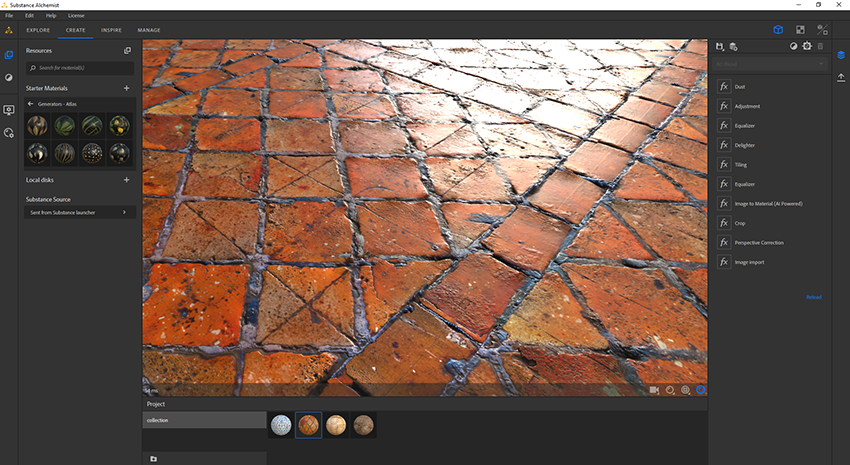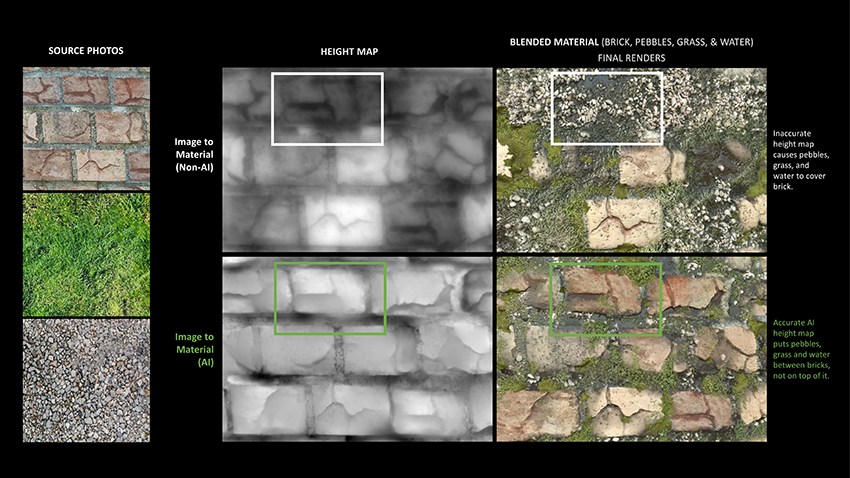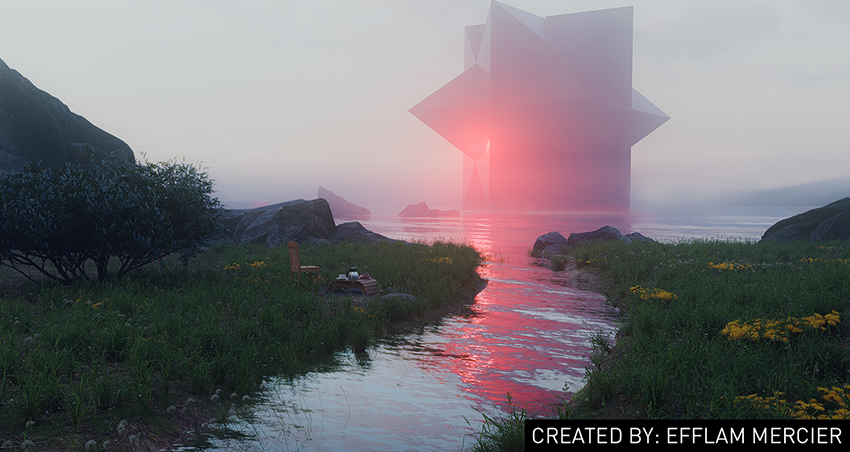Image Courtesy Adobe
The creative workflows of artists and designers everywhere are getting a serious boost from AI and NVIDIA RTX GPUs.
The latest releases of Substance Alchemist and Blender are introducing AI-powered features, like denoising and material creation, bringing the power of AI to millions of content creators around the world.
Substance Alchemist Uses Images to Create Realistic Materials
Substance Alchemist, Adobe’s material creation tool, received an AI upgrade to its Image to Material feature today. The featureallows artists to capture a photo of real-world surfaces and create textures for 3D that can be used in content creation. It’s a powerful, faster and easier way to create realistic materials.
Image to Material is accelerated by NVIDIA RTX GPUs to run an AI algorithm that recognizes shapes and objects in a photograph. It automatically generates a higher quality, accurate texture map that includes base color, height and normal, allowing artists to focus on creativity instead of time-consuming map refinement.
The end result is a more precise material which was created with the click of a button.
“The power of AI now allows artists to generate high-quality digital materials in minutes, from a single photograph,” said Baptiste Manteau, product manager at Adobe. “This is an exciting next step for Substance Alchemist, bringing the physical world into the digital material creation process.”
The AI-powered Image to Material feature replaces Bitmap 2 Material (B2M) to import photographs into Alchemist. Without the power of AI, B2M struggled to properly identify shapes in the image, resulting in texture maps that required artists to spend additional time manually refining, tweaking and de-lighting.
Quality comparison between “bitmap 2 material” and AI-powered “image to material.”
“Designers are always working against the clock,” said Daniel Margunato, co-owner and ArchViz artist at Oneblock City. “With Alchemist’s Image to Material running on a Quadro RTX 5000, I am able to load, analyze and render incredibly detailed images nearly instantaneously. I can dedicate the enormous time savings to fine tuning and elevating my designs – it’s a huge luxury.”
Blender Accelerates Viewport Interactivity with AI Denoising
With Blender 2.83, released earlier this month, artists can incorporate AI-powered denoising — a process that predicts final images from partially rendered results — while they’re designing in the viewport. This allows users to explore new ideas and quickly iterate on design choices with full confidence in how it will turn out.
Image created by Efflam Mercier
AI denoising in Blender is based on the NVIDIA OptiX SDK and accelerated by the AI capabilities of RTX GPUs. It builds on the RTX-accelerated ray tracing introduced in Blender Cycles 2.81, and the improved speed of final frame rendering found in version 2.82.
This blistering rate of updates underscores the enthusiasm of the Blender open source development community for the game-changing advancements that RTX acceleration brings to 3D artists and designers.
“We’ve worked closely with NVIDIA to continually boost the rendering performance of Blender Cycles,” said Dalai Felinto, development manager at Blender. “Together we completed an entirely new backend for Cycles, integrating NVIDIA OptiX to achieve optimal ray-tracing performance using NVIDIA RTX GPUs. This will result in huge time savings and greater creative freedom for our users.”
Watch how the powerful combination of RTX-accelerated ray tracing and AI denoising in the viewport makes 3D creation interactive, so artists can focus their attention on exploring new ideas to get to that perfect shot.
Here is what users are saying about OptiX denoising in Blender:
“If you need a single stylized shot or clean production-quality rendering, OptiX denoising is a huge time-saver,” said Nkoro Anselem, aka askNK, a CGI artist and instructor. “You can play with light and movement and get real-time feedback. It will change how people work with Blender.”
“NVIDIA’s OptiX upgrade for Blender/Cycles is a fantastic speed boost for viewport and final render times,” said Ben Mauro, senior concept designer at 343 Industries. “The AI-based denoising has been an incredible asset and time-saver in my work, where every second counts to meet deadlines.”
The latest Blender and Alchemist releases join a growing list of the most popular creative applications that incorporate AI-powered features into the content creation workflow. Others include Adobe Premiere Pro and Lightroom, Autodesk VRED, Blackmagic Design DaVinci Resolve, Chaos Group V-Ray, CorelDRAW Graphics Suite and Luxion Keyshot. These apps are part of a paradigm shift and create big time savings for content creators.
To get the optimal experience with the latest applications releases, use the latest NVIDIA Studio Driver or Quadro ODE Driver. They can be downloaded through the GeForce Experience or Quadro Experience apps, or from the driver download page.
Learn more about other NVIDIA RTX-enabled applications.


